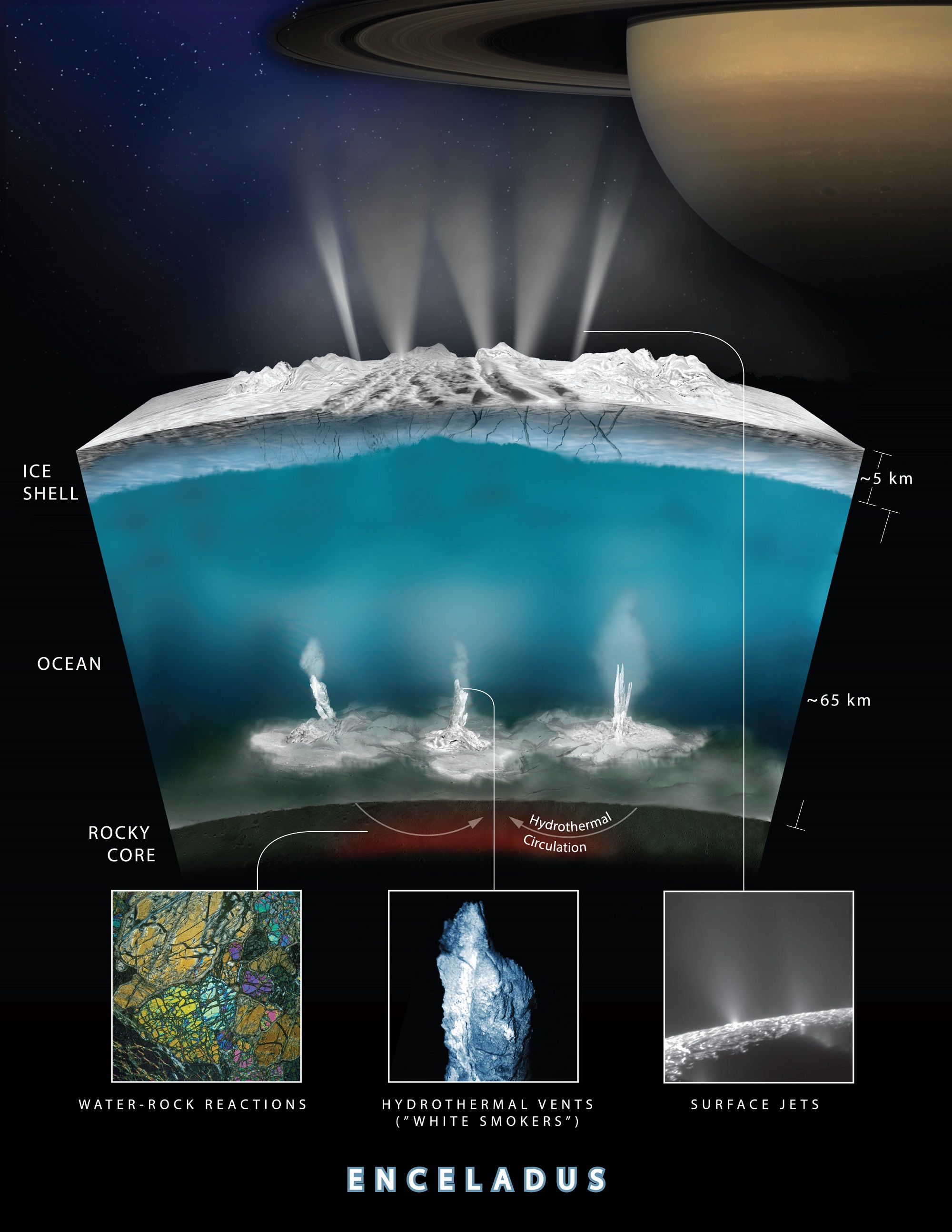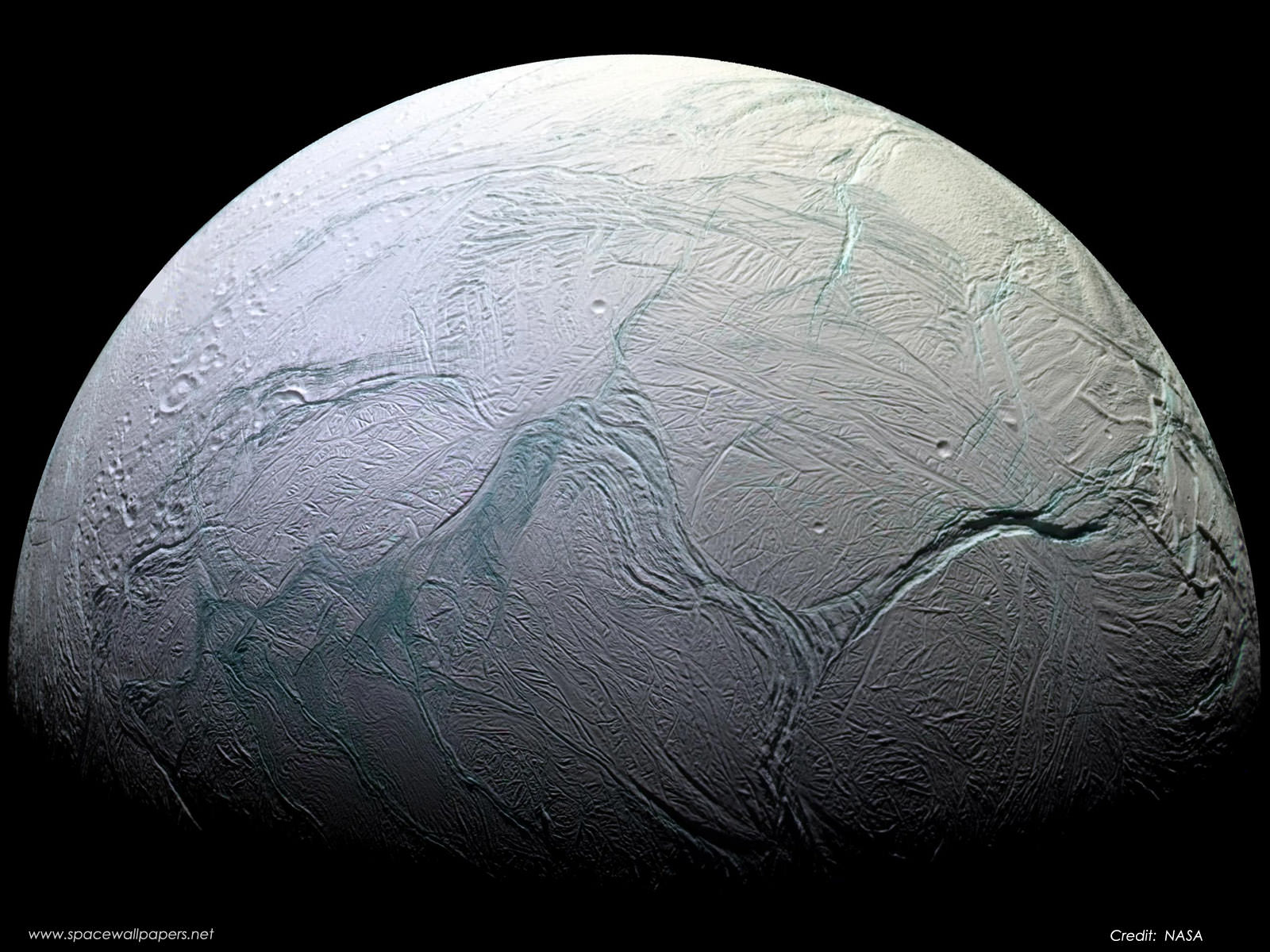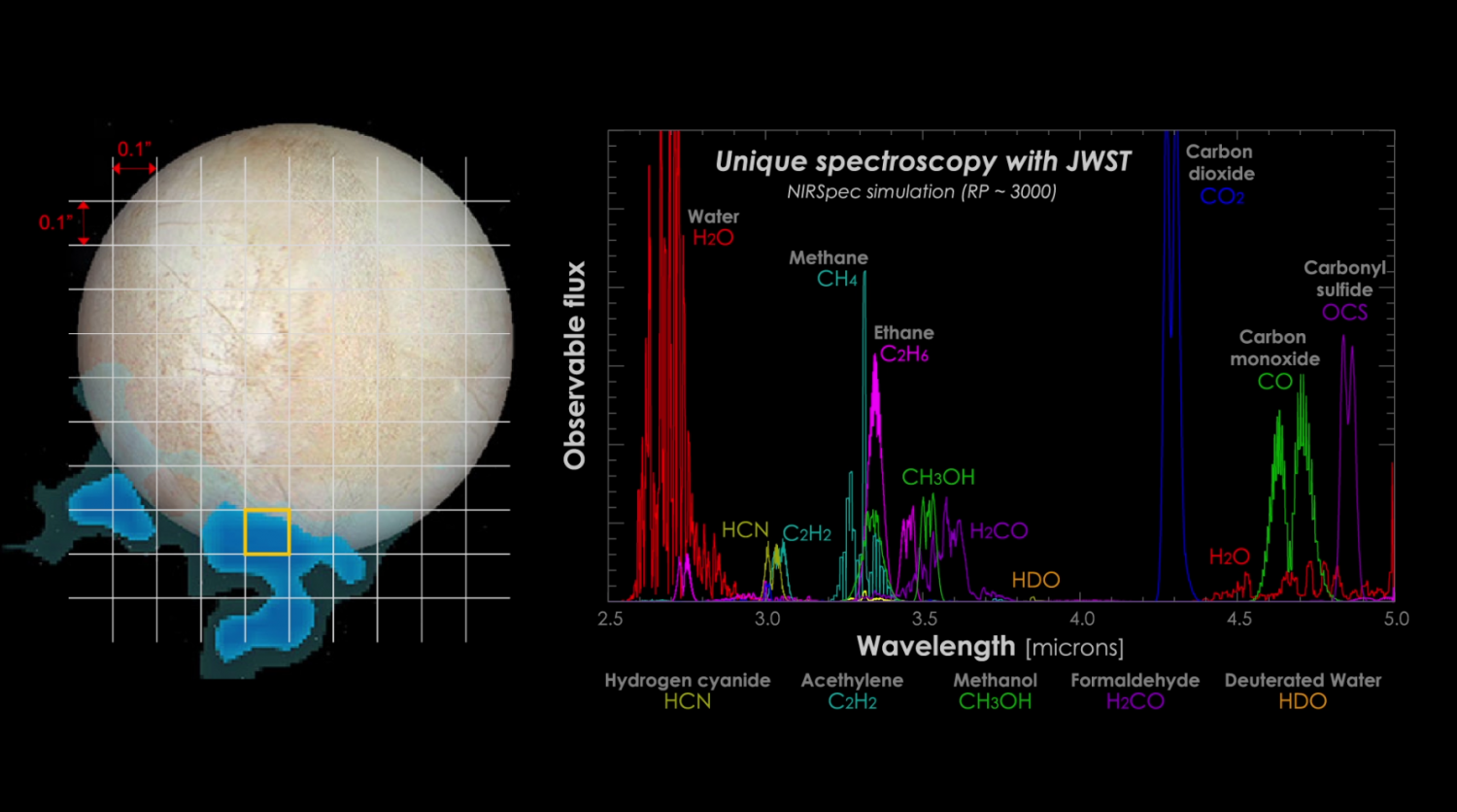New NASA tool that will look for signs of life on Enceladus

Possible variant of hydrothermal activity in the artist's view
Since the probe of the Cassini mission entered the Saturn system and began to study its moons, Enceladus has become the main topic of study. When the probe found water fountains and organic molecules that were erupting around the southern pole of the planet, scientists began to suggest that a warm ocean could exist under the surface of Enceladus, like in Europe, the satellite of Jupiter and other bodies in the solar system.
In the future, NASA hopes to send another mission to this system in order to further explore these fountains and the entrails of Enceladus. This mission is likely to include a new tool, which was announced recently - Submillimeter tool for finding the basics of life on Enceladus (Submillimeter Enceladus Life Fundamentals Instrument, SELFI). The tool was proposed by a team from the Goddard Space Flight Center, and recently he received support for further development.
Before the Cassini mission, scientists believed that the surface of Enceladus was solid and frozen. However, data from Cassini showed slight fluctuations in the moon's orbit, suggesting the presence of a sub-ice ocean. As in Europe, this is due to the tidal forces that deform the crust, which creates enough heat to keep the liquid water inside. Around the South Pole because of this ice is cracking.

A variant of the internal structure of Enceladus in the artist’s view, demonstrating how hydrothermal activity can lead to the eruption of water on the moon’s surface.
The Cassini mission also found fountains, spewing out of the order of hundreds of different cracks, spitting out particles of ice, water vapor, carbon dioxide, methane and other gases into space. To study them more closely, NASA has developed quite ambitious tools that will work on millimeter or radio frequencies, determining the composition of the fountains and studying the internal ocean of Enceladus.
According to SELFI research supervisor Gordon Chin, the project represents a significant improvement in accuracy compared to existing devices operating at a submillimeter frequency. After deployment, it will measure traces of chemicals in fountains of water and ice particles, periodically flying out of cracks in the south of Enceladus, also known as "tiger stripes." In addition to studying the chemical composition of the ocean, this tool will answer the question about the potential presence of life in it.
On Earth, hydrothermal sources are home to thriving ecosystems, and are even considered some of the sources of life on Earth . Therefore, scientists so much want to study the hydrothermal activity on the moons of the Enceladus type - because they represent the most likely location of extraterrestrial life in the solar system. As Chin noted in a NASA press release:
Submillimeter wavelengths that fall in the range of high frequency radio give us a way to measure the number of different molecules in a cold gas. We can scan all the fountains and find out what comes out of Enceladus. Water vapor and other molecules can partially reveal the chemical composition of the ocean and suggest the best path for a spacecraft to fly through fountains in order to directly measure other indicators.

"Tiger stripes" on Enceladus, photographed by the Cassini probe
Such molecules as water, carbon dioxide, and other elements emit radio waves of a certain frequency, to which submillimeter spectrometers are sensitive. The spectral lines are well separated, and the intensity of their emission allows them to be numerically estimated. In other words, instruments such as SELFI can not only determine the chemical composition of Enceladus’s inland ocean, but also measure the amount of these substances.
For decades, spectrometers have been used in space research to measure the chemical compositions of planets, stars, comets, and other targets. Recently, scientists have begun to try to obtain spectra of distant planets in order to determine the chemical composition of their atmospheres. This is important when searching for potentially habitable exoplanets, since water known to us requires water vapor, nitrogen and oxygen.
Scanning in the submillimeter range is a relatively new process, because its sensitive tools are complex and difficult to manufacture. But with funding from NASA, Chin and colleagues increase the sensitivity of the instrument with an amplifier designed for a 557 GHz signal. This will allow SELFI to detect even small traces of water and gases emanating from the surface of Enceladus.
Other improvements include a more energy efficient and flexible data processing system, as well as a sophisticated digital spectrometer for radio frequencies. This will include high-speed programmable circuitry that converts radio frequency data into digital signals, which can then be analyzed to measure the quantity, temperature, and gas velocity in Enceladus fountains.

The likely results of the spectroscopy of one of the fountains of Enceladus. This is an example of the data that James Webb's telescope can produce.
The improvements will allow SELFI to simultaneously detect and analyze 13 different types of molecules, including different water isotopes, methane, ammonia, ozone, hydrogen peroxide, sulfur dioxide, sodium chloride (i.e. salt). Chin believes that the team can work the tool so that it is useful not only on Enceladus, but also in other future missions. “SELFI is a new device,” he says. “And this is one of the most ambitious submillimeter instruments.”
For example, several years ago, scientists discovered fountains emanating from the surface of Europe. And here this activity is considered to be the result of geothermal processes sending fountains of warm water from the depths of the inner ocean of the moon to the surface. NASA is already planning to analyze these fountains and the fountains of Enceladus with the help of the James Webb space telescope, which is to be commissioned in 2019.
Another possibility is to equip the Europa Clipper interplanetary station, preparing to launch somewhere between 2022 and 2025 with a tool like SELFI. The spectrometer is already asking for the station's toolkit, but an improved device for operation at submillimeter and radio frequencies may allow a more thorough study of the fountains of Europe. These data can resolve the debate that has been going on for many decades over whether its insides are capable of supporting life.
In the coming decades, one of the greatest priorities of space exploration will be the exploration of the oceanic worlds of the solar system for traces of life. To this end, NASA and other space agencies are developing the necessary tools that can sniff out chemical and biological indicators. In the coming decade it may turn out that life on Earth is not an exception, but part of the rule.
All Articles